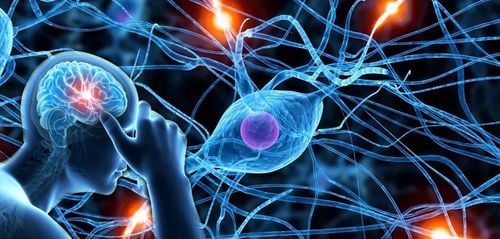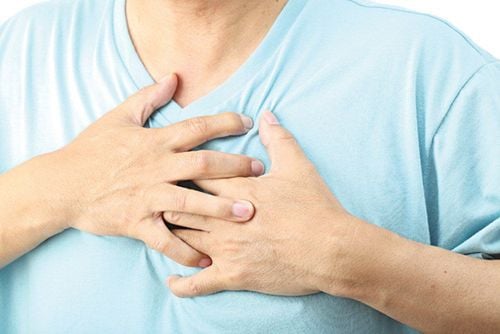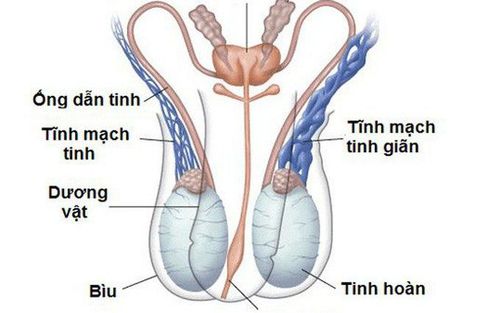This is an automatically translated article.
Test of heart rate response by Valsalva maneuver helps patients with tachycardia, corrects disorders as well as limits complications caused by tachycardia. In addition, the Valsalva test is also effective in diagnosing autonomic nervous system disorders, treating tinnitus...
1. What is the Valsalva maneuver?
Test of autonomic nervous system is often prescribed by doctors because it has many advantages such as being able to assess the severity and characteristics of autonomic nervous system disorders, non-invasive method, Easy to perform, the tests are often quite sensitive and can even detect abnormalities before they become clinically apparent.
The Valsalva maneuver is a breathing technique indicated when the doctor wants to diagnose some problems in the autonomic nervous system. This test is named after a famous Italian physician and anatomist in the seventeenth century. In addition to diagnosing disorders in the autonomic nervous system, the Valsalva test is also indicated for use with the aim of helping patients get rid of tachycardia caused by cardiac arrhythmias.
2. Heart rate response test with Valsalva maneuver
The technique of testing the heart rate response with the Valsalva maneuver is performed as follows:Before performing, the patient can sit or lie down to have the most comfortable and convenient position. The patient breathes as hard as he can into a resistance tube connected to a mercury sphygmomanometer, attempting to create and maintain a pressure of 40 mmHg for 15 seconds. After finishing, the patient breathes normally and is absolutely not allowed to talk. During the test, the doctor will hear a korotkoff sound in the brachial artery. Patients are performed several times, at least 3 times, each time is about 2 minutes apart, the end result will be recognized as the highest rate of the times.

Kết quả test đáp ứng nhịp tim với nghiệm pháp Valsalva
The Valsalva maneuver is divided into four stages:
Stage 1: A transient increase in blood pressure will occur because blood from the pulmonary circulation into the atria of the heart increases the amount of blood injected by the heart. Stage 2: The amount of blood from the heart decreases and the pressure from the chest cavity prevents blood from returning to the chest or heart. At this stage, if the autonomic nervous system is healthy, the blood pressure will stabilize back to normal levels. Stage 3: After the patient has normalized breathing, adequate blood supply is restored but cardiac output may decrease. Stage 4: The patient's blood pressure increases due to sympathetic reflexes, Blood flow, cardiac output, and blood pressure returned to normal. Heart rate response test results are normal when korotkoff sounds appear in stages 1 and 4, heart rate increases in stages 2, 3 and decreases in stages 4.
3. Notes when performing the Valsalva maneuver
Although the Valsalva maneuver can be used to treat most cardiovascular problems, there are a few things to keep in mind when using this maneuver:
The Valsalva maneuver should not be performed on tall patients. blood pressure, a high risk of stroke or heart attack. Patients with cardiac arrhythmias after performing this test many times but without success, should go to the hospital immediately, especially when accompanied by signs of myocardial infarction such as chest pain, shortness of breath, want to faint. fainting... Should be careful when performing the Valsalva maneuver, if the patient breathes too hard, it can lead to perforation of the eardrum. The Valsalva maneuver is absolutely not performed for patients with bleeding, recent ear surgery or CNS surgery.

Người bệnh đau tim không nên thực hiện test đáp ứng nhịp tim với nghiệm pháp Valsalva
Currently, Vinmec International General Hospital is one of the leading prestigious hospitals in the country, trusted by a large number of patients to perform tests to assess autonomic nervous system function, heart rate. Not only has the physical system, modern equipment with: 6 ultrasound rooms, 4 DR X-ray rooms (1 full-axis machine, 1 light machine, 1 general machine and 1 mammography machine) ), 2 mobile DR X-ray machines, 2 multi-row CT scanners (1 128 arrays and 1 16 arrays), 2 Magnetic Resonance imaging rooms (1 3 Tesla machine and 1 1.5 Tesla machine) , 1 room for 2 levels of interventional angiography and 1 room for bone mineral density.... Vinmec is also the place to gather a team of experienced doctors and nurses who will greatly assist in the diagnosis and development. early detection of abnormal signs of the patient's body. In particular, with a space designed according to 5-star hotel standards, Vinmec ensures to bring patients the most comfort, friendliness and peace of mind.
Please dial HOTLINE for more information or register for an appointment HERE. Download MyVinmec app to make appointments faster and to manage your bookings easily.













